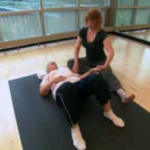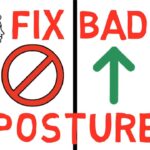Benefits and Research
The Alexander Technique attracts individuals wanting to improve mobility, ease postural discomfort, reduce chronic pain, and manage stress, while others seek lessons to advance their skills in the performing arts and athletic endeavours. Browse the menu lists below to learn more about how Alexander Technique can benefit you.
Use of resources
Please note that the content within the Research & Resources and Videos sections is provided only for general information purposes.
Use of Resources
Please note that the content within the Research & Resources is provided only for general information purposes. Many of the resources, such as books, are not free. Links to other websites or platforms are provided for viewers’ convenience, but ATC does not control or monitor them and accordingly cannot endorse their information or guarantee its accuracy and relevance. The use of content or links to third-party websites is at the viewers’ own risk. Viewers should contact an ATC-certified Alexander Technique teacher with any questions about the application of Alexander Technique to their specific issues.
Posture
- Benefits
- Resources
- Videos
- Testimonials
The use of Alexander Technique can dramatically improve posture and well-being.
Very young children naturally have expansive and beautifully poised bodies, but as they get older that poise becomes increasingly difficult to maintain. Many factors contribute to the loss of balanced posture, including physical and emotional stress placed on the body (e.g., children sitting in chairs at school for long hours at school). A lack of awareness and knowledge of the body can further complicate the ability to sustain healthy posture.
Eventually, poor posture can impede proper breathing and digestion, affects how one stands, walks, and sits at a computer, and can lead to pain and other neuromuscular issues. Additionally, poor posture can result in injury and exasperate strained movement.
Individuals over time can perceive that their posture has deteriorated but they do not necessarily know how they got into that state. For some, the constant downward pressure on their spines causes them to slouch and round their upper backs and shoulders, which, if severe enough, can lead to a misshapen spine. The limbs become retracted into the torso and the head is pulled down into the shortened neck and spine. Some muscle groups are used too much while others not enough.
Posture has a significant impact on health, energy, and longevity. Poor posture decreases lung capacity by up to 30% and increases the likelihood of atherosclerosis and lung-related disease. Poor posture also increases a sympathetic nervous system activation (“fight or flight”) and accompanying stress (Ari Whitten, The Energy Blueprint).
As Lawrence Smith notes, “The job of posture is to adapt the body to support our responses and our intentions. Good posture distributes the work involved in any action reflexively. Thus, if you pick something up, there is nothing you can do before beginning to lift that object that will prepare your muscles for the work of lifting. Once you actually engage the body in the act of lifting, the work will be appropriately distributed throughout the body, that is, if your body is free to adapt. An adaptable body responds to the weight of the lifted object, and to the intention of the direction of movement involved in lifting . . . . Alexander Technique helps the individual to adopt a dynamic posture as a result of an adaptable body and mind.”
Articles
Books
Posture Workbook: Free Yourself From Back, Neck And Shoulder Pain With The Alexander Technique
There are no testimonials currently available.








